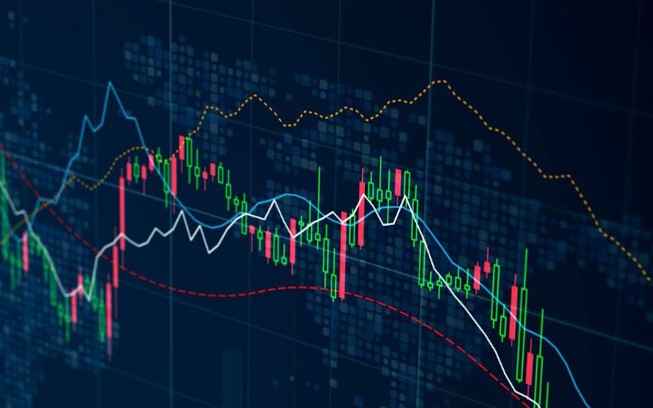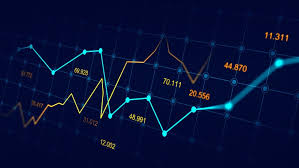
Learn Forex Trading Step by Step: A Comprehensive Guide
If you’re looking to dive into the world of forex trading, you’ve landed at the right place. Forex, or foreign exchange trading, is the act of buying and selling currencies, and it offers immense opportunities for traders. In this article, we’ll walk you through the essential steps to get started with forex trading, plus provide insights that can help you on your trading journey. For excellent resources and trustworthy platforms, consider checking out learn forex trading step by step Best Vietnamese Brokers.
Understanding the Basics of Forex Trading
The foreign exchange market is the largest financial market in the world, with a daily trading volume exceeding $6 trillion. Unlike stock markets, the forex market is decentralized and operates 24/5, meaning you can trade at virtually any time of day. Familiarizing yourself with terms commonly used in forex trading is an essential first step. Here are a few key concepts:
- Currency Pair: Forex trading involves currency pairs, with the first currency known as the base currency and the second as the quote currency. For example, in the pair EUR/USD, EUR is the base currency, and USD is the quote currency.
- Pips: A pip is the smallest price move that a given exchange rate can make based on market convention. Generally, it represents the fourth decimal place in most currency pairs.
- Leverage: Leverage allows traders to control larger positions with a smaller amount of capital. While it can amplify profits, it also increases risk.
Step 1: Educate Yourself
The first step to becoming a successful forex trader is to educate yourself. There are numerous resources available, including online courses, books, and webinars. Start by learning the basics of trading and financial markets. Here are a few recommended resources:
- Books: “Currency Trading for Dummies” and “Trading in the Zone” are excellent starting points.
- Online Courses: Websites like Coursera and Udemy offer comprehensive courses on forex trading.
- Webinars: Many brokers offer free webinars that cover trading strategies and market analysis.
Step 2: Choose a Reliable Broker
Choosing the right broker is crucial, as the broker acts as your intermediary in the forex market. It’s essential to conduct thorough research to find a broker that suits your trading needs. Look for brokers that are regulated, have a good reputation, and offer a robust trading platform. Here are some factors to consider when choosing a broker:
- Regulation: Ensure the broker is regulated by a reputable authority, such as the Financial Conduct Authority (FCA) or the Securities and Exchange Commission (SEC).
- Trading Platform: The trading platform should be user-friendly and equipped with tools for analysis and charting.
- Commission and Spreads: Compare brokers’ fees, spreads, and commission structures to find the best deal.
Step 3: Develop a Trading Plan
A trading plan acts as your roadmap; it sets clear guidelines for your trading activities. A solid trading plan should include:

- Trading Goals: Define your financial goals and what you want to achieve through forex trading.
- Risk Management: Outline how much you’re willing to risk on each trade and set stop-loss orders to limit potential losses.
- Trading Strategy: Choose a trading strategy that suits your personality and lifestyle, whether it’s day trading, swing trading, or long-term investing.
Step 4: Utilize a Demo Account
Before committing real money, practice trading with a demo account. Most brokers offer demo accounts where you can trade with virtual money. This is an invaluable opportunity to test your trading strategies, familiarize yourself with the trading platform, and gain confidence without financial risk. During this phase, focus on:
- Testing Different Strategies: Experiment with various trading strategies to see what works best for you.
- Monitoring Performance: Track your performance and make adjustments to your trading plan as needed.
- Understanding Market Conditions: Get a feel for how different market conditions affect trading outcomes.
Step 5: Start Trading with Real Money
Once you feel confident and ready, it’s time to start trading with real money. Begin with a small investment that you can afford to lose, and gradually scale up as you gain more experience. Keep the following tips in mind:
- Stick to Your Trading Plan: Adhere to the guidelines outlined in your trading plan to maintain discipline.
- Manage Emotions: Trading can be emotional; fear and greed can cloud judgment. Learn to keep your emotions in check.
- Continuous Learning: The markets are constantly evolving. Stay informed by regularly reading market news, analysis, and economic indicators.
Step 6: Keep a Trading Journal
Maintaining a trading journal is crucial for your growth as a trader. Document your trades, including entries, exits, reasons for trading, and the outcome. This record helps you analyze your performance, identify strengths and weaknesses, and refine your strategies over time. A trading journal can reveal patterns in your trading behavior that can lead to improvements.
Step 7: Expand Your Knowledge and Skills
To remain competitive in the forex market, you must continuously expand your knowledge and skills. Attend workshops, engage in webinars, and network with other traders. Additionally, explore different trading strategies and indicators, and stay updated on economic news that can impact currency fluctuations. Join online trading communities to exchange ideas and experiences with fellow traders.
Conclusion
Learning forex trading step by step is an achievable goal if you approach it with dedication and a willingness to learn. Start by educating yourself on the basics, choose a reliable broker, and develop a solid trading plan. Practice in a demo account to gain experience before trading with real money. Remember that trading is a journey that involves continuous learning and adaptation. Stay patient and disciplined, and you’ll be on your way to becoming a successful forex trader.
